A quest for better understanding of textures
-


Thankyou for doing this! I've been going through some of the material like you did there. Never got around to organize a post.
This is very nice. I'm making it a sticky.
-

Thanks for this. It's very helpful to see side by side. I'm wondering if you can give a little more information on your material settings. I see a number of the planes have the texture cut off in a semicircular shape, similar to some of the images in this thread.Andy
-
Wasn't there a hint about the infinite plane too close, causing this effect or did I misunderstand?
-
andybot - i know it's there, and it's the artifact i was talking about in the post
 and yes, it's the overlapping of the VRay infinite plane with the 'showcase' plane.
and yes, it's the overlapping of the VRay infinite plane with the 'showcase' plane. -
 Oh right. I glossed over your description...
Oh right. I glossed over your description...
Were you able to fix it by moving the infinite plane down ever so slightly? -
yes, the artifacts vanished when i moved the showcase plane 1mm upward. i can re-render the images later and update the files.
also i played a bit with the Falloff and Fresnel textures and it seems like Fresnel is a special type of Falloff, but with slightly different options to set; i want to elaborate these textures further and update the post later.
also, in the meantime, TexFalloff set to Angular Blend can produce 'pearlescent car paint' effects (known by many from need for speed:underground ^^) as i found out on page 60 in this pdf.that's just a useful link i wanted to send out earlier, before i do the analysis myself. (also, there are so many versions and manuals on VRay for Sketchup that can differ only in one page, just like this pdf. at least i don't remember seeing this particular page before...)
-
Wow, thanks for going through all of this and sharing. How many people actually use these? I have always found it more flexible to use a texture map because you can see it in SketchUp. Although I bet using these methods of texturing would make for faster renders. Can this be confirmed.
-
Hi Sir eidam655! I have a question regarding the TexGrid.. can you give me a basic setting on how to use it.. I tried it once but the grid doesn't show..Thanks in advance sir!

-
hello winGman,
create a material, open it in material editor:
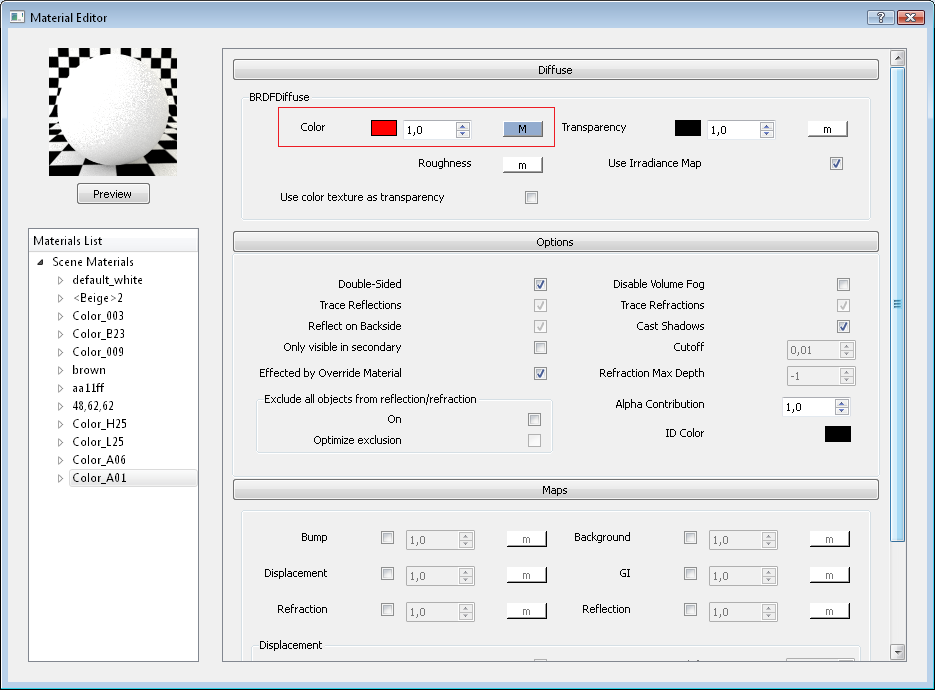
assign the TexGrid texture to the Diffuse channel (or some other channel, depending on your desired usage) and try to play around with the UV repeat values to adjust its size:
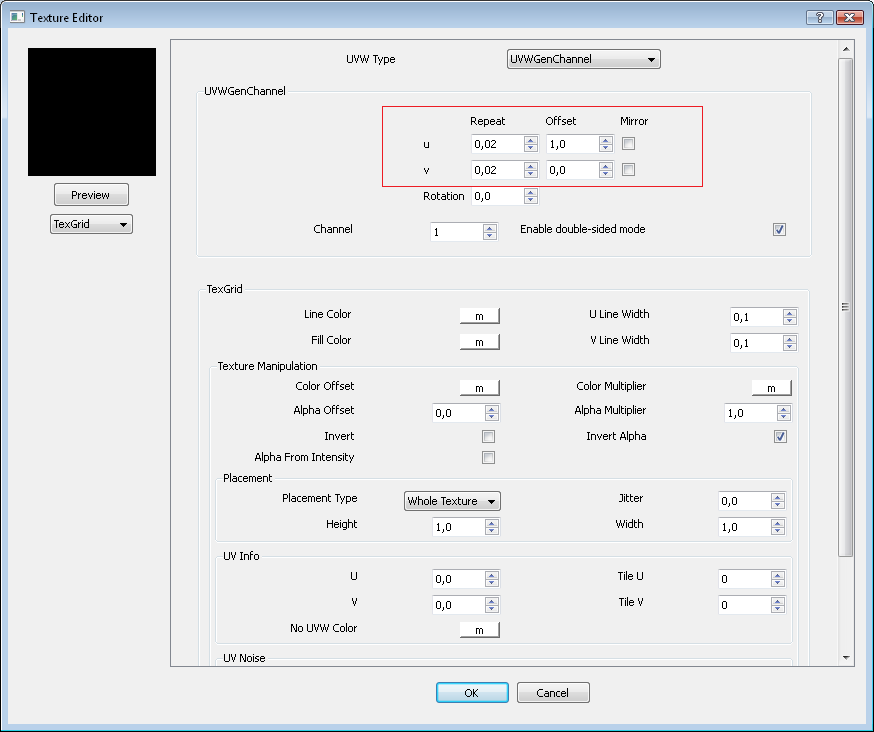
after this, my render looks like this:
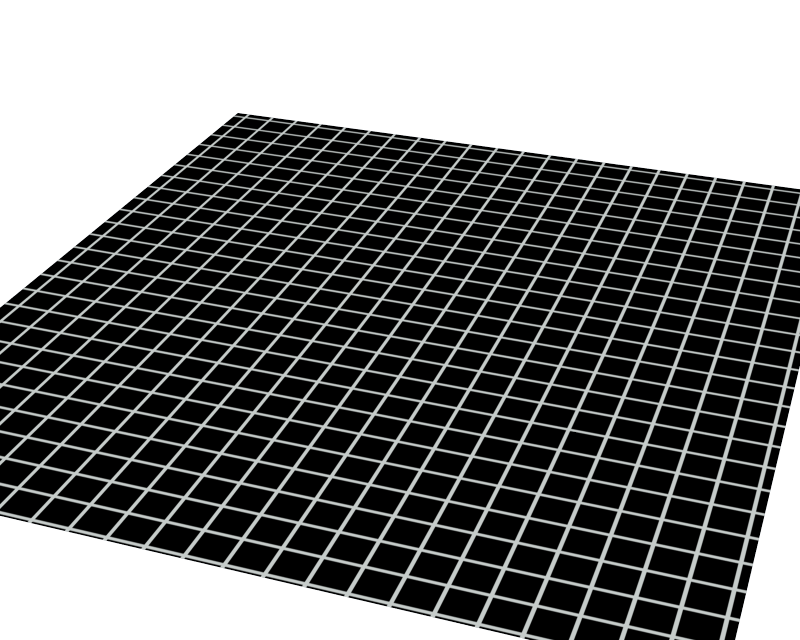
and that should be it

-
i just made a quick comparison between a procedural noise and a bitmap noise on a cube.
bitmap noise:

procedural noise:

- this is no scientific comparison, it's just taking the cube and rendering it with a 400x400 BW bitmap and with TexNoise (Perlin, Size = 5). that said, i don't think that there will always be a difference this big between the rendertimes. also i suspect VRay of not adding the preprocessing time to the %rendertime% timestamp and shows only the final pass instead (correct me if i'm wrong).
- i didn't expect a difference THIS big. 11s vs 20s is... well, impressive.
- in the 'real' 3D work it will always matter which technique are you most familiar with to speed things up. additionally, there will always be a tradeoff between the preprocessing time of the procedural textures vs. rendering time of bitmaps.
i just think it's nice to have all this information at one place as a reference, so people don't have to wander around the internet or in their memories : )
-
How do I change the grid size to 5 times larger? Been trying to adjust in U and V but still could not get it.
@eidam655 said:
hello winGman,
create a material, open it in material editor:
[attachment=1:3chobg9h]<!-- ia1 -->texgrid_tut_1.png<!-- ia1 -->[/attachment:3chobg9h]
assign the TexGrid texture to the Diffuse channel (or some other channel, depending on your desired usage) and try to play around with the UV repeat values to adjust its size:
[attachment=2:3chobg9h]<!-- ia2 -->texgrid_tut_2.png<!-- ia2 -->[/attachment:3chobg9h]after this, my render looks like this:
[attachment=0:3chobg9h]<!-- ia0 -->texgrid_tut.png<!-- ia0 -->[/attachment:3chobg9h]and that should be it

-
TexWater doesn't appear to be fully implemented - it's just producing a colour that cannot be adjusted...

-
This is a great reference post. The only thing I would like to see is if these maps, once applied on the diffuse channel, are visible in the Sketchup Model, or only at rendering time.
Nice work!
-
@broomstick said:
This is a great reference post. The only thing I would like to see is if these maps, once applied on the diffuse channel, are visible in the Sketchup Model, or only at rendering time.
Only at render time. SketchUp has no knowledge of how V-Ray materials are designed.
-
@thomthom said:
Only at render time. SketchUp has no knowledge of how V-Ray materials are designed.
So how does this make them usable?? Maybe I'm just too used to using vray materials in 3d studio max!
-
@broomstick said:
@thomthom said:
Only at render time. SketchUp has no knowledge of how V-Ray materials are designed.
So how does this make them usable?? Maybe I'm just too used to using vray materials in 3d studio max!
Make use of the preview feature in VfSU's material editor (it's not great I know) or make small test scenes. I've done similar tests before to visualize these V-Ray textures and used several of them in my project.
-
I did some test with the procedural texture for wood. The variable 'center_v' seems to have the most influence on the texture size.
It is a 3d texture, I think that means that the object cuts through the texture somehow. It reminds me of the old days with POV-ray - which has extensive documentation on all of its functions, including its procedural wood texture. (although I'm not sure wether or not they are mathematically the same)
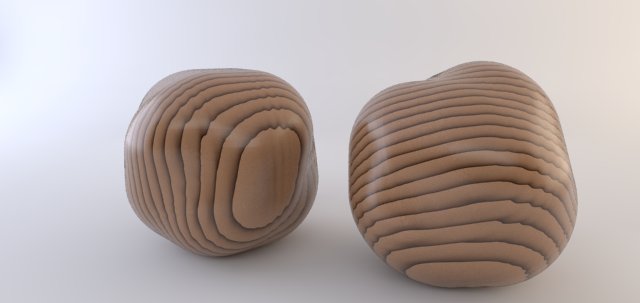
-
That's a nice sample. Thanks!

-
wow, thanks for this

another thing i discovered is that with 'use_3d_mapping' checked (ie. it's ON), the result is just like you showed us; however, if you uncheck it, you'll get a texture of the wood end. demonstrating on your material:

however, i couldn't get center_v get to change the scale on my textures. i would say that center_u and _v define the center position of the texture, so i don't think this would affect the size... more testing is needed though.

strange thing is that even when in the TexWood preview window something is happening, in the material preview and in the render not so many things change...
-
Oh yeah also this; the placement is dependent on the origin of the model or component. I'm not exactly sure how the difference between applying a material to a face or to a component is in play, but the component axes thing is clearly demonstrated in the example below:
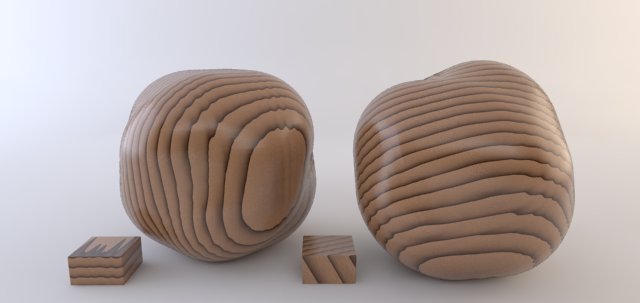
In this image, the two little blocks on the floor are the same component - one of them made unique and the axes of that one have been put at an angle of 45 degrees in two directions.
As for the balls, they are the same component, one of them is rotated.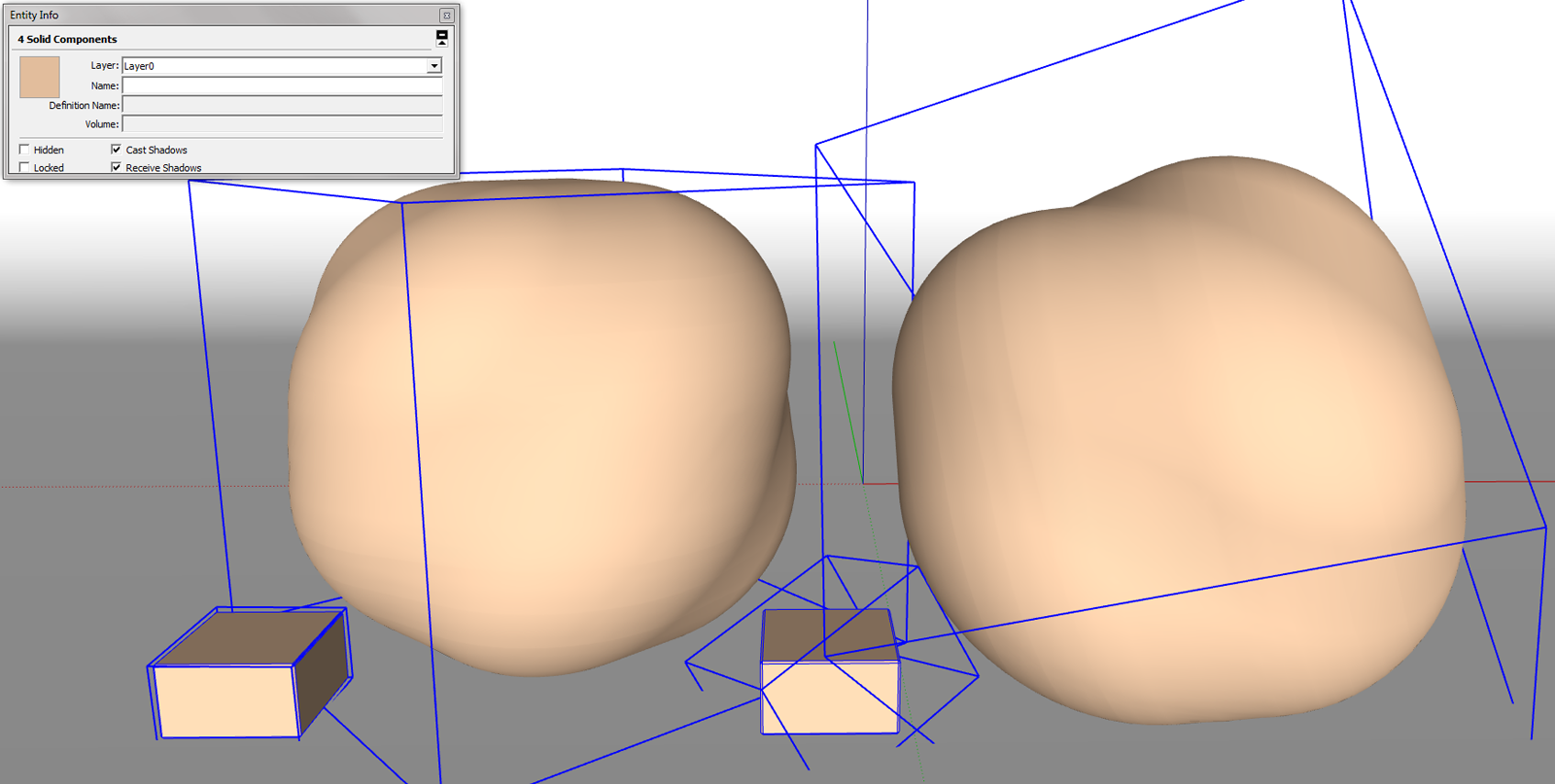
Advertisement







